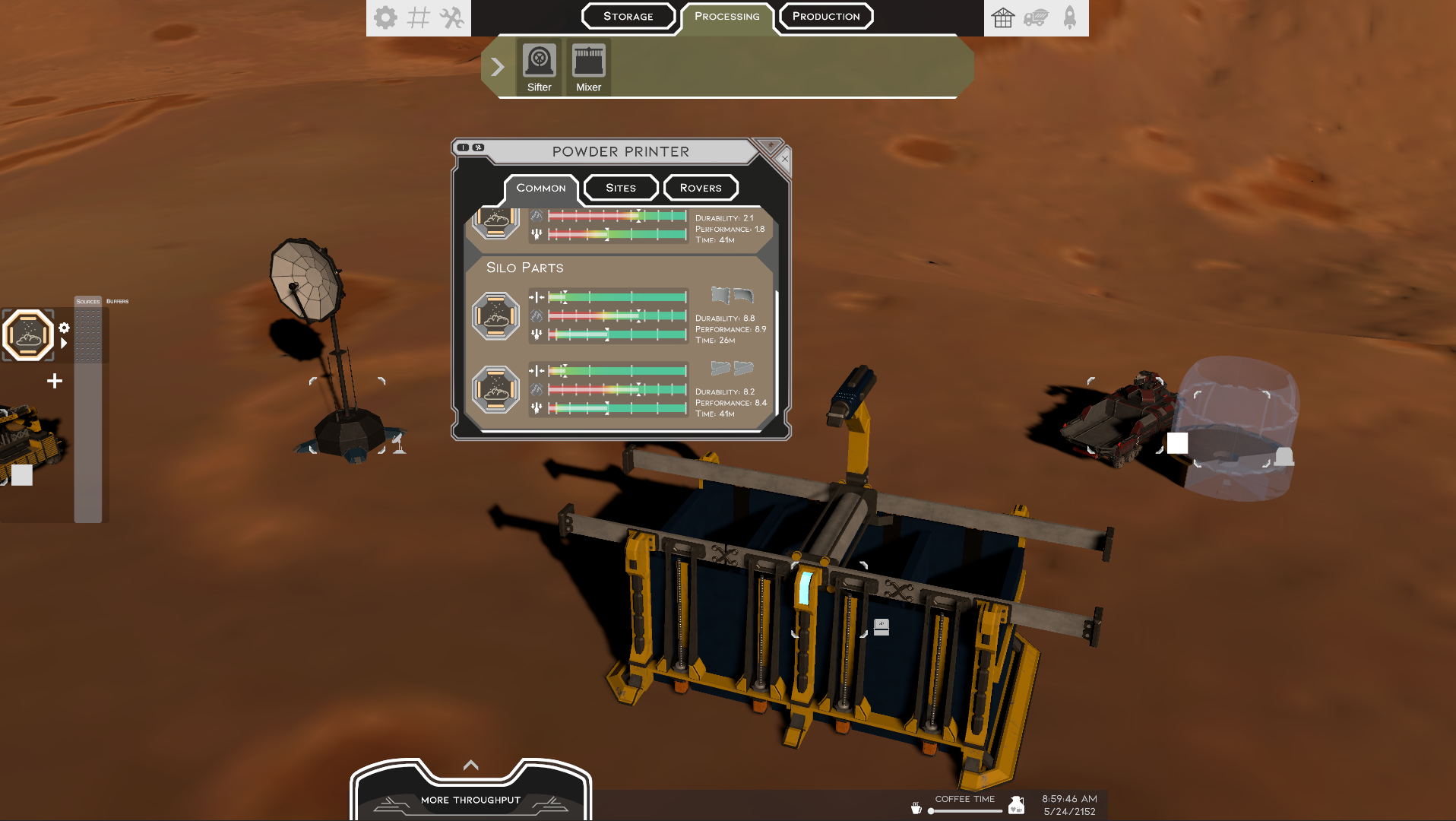Material, Part 1
To our Tau Ceti Labs team, ‘Play with Science’ means delivering real scientific content in a meaningful and engaging way. For LithoBreak, and all our games, this promise is delivered by integrating accurate science and engineering content into every aspect of the game possible. This means that every material and process is real, has meaningful visualizations, and helps support the ever-growing mining and exploration activities.
With this in mind, we are approaching LithoBreak with materials science and engineering books at hand. We also collaborate with Ph.D.’s and Engineers to ensure accuracy and that we are presenting you with challenges real engineers and scientists face.
(WIP) Powder printer window with drag-and-drop ‘locktagons’ for material selection
To start, we referenced research papers and materials science books to find material types and makeups that would be naturally found and produced on moons. In our research, we found that chemical compositions are different in low-oxygen environments compared to what is found on the Earth of Sol. For example, regolith material includes FeO instead of Fe2O3 to reflect the low atmospheric and lower oxygen found on the moons of 61 Cygni.
Ceramic material found in LithoBreak contains crystalline compounds in the concentrations found on such moons. These compounds have natural mechanical properties and varying scarcity, which brings us to how careful material selection is important in LithoBreak.
As a brief overview, in LithoBreak each system is made of parts and each part is produced using some material. Using materials with properties that better match what a specific part needs means that the part will perform better and/or last longer. Better materials means better parts, better parts means better systems.
Material selection for a part is a challenge real Engineers face. To make an informed decision, material properties are evaluated against the needs of the component and weighed against the cost of the material in question. In the same way, LithoBreak presents important material properties against what is needed intuitively. Depending on the material selected, this can come with the additional challenge of ensuring enough of a material is available or producible.
On top of having a myriad of materials to work with, different material types with varying important material properties are available. While some will need more processing to produce than others, every chemical and crystal originates from some source consisting of the elements found in the final material. This is as true in LithoBreak as it is in the Verse. We will delve more into this aspect in later updates.
(WIP) Powder printer window focusing on the mechanical properties sliders for compressive strength, hardness, and melting temperature
Know that we go to such lengths to immerse you in a sci-fi world in the deepest way possible. We strive to make LithoBreak a fun experience that puts you in the EVA boots of an engineer deep in the black.
We humbly invite you on this journey of creating a truly unique experience.



